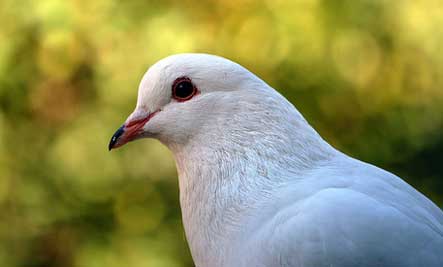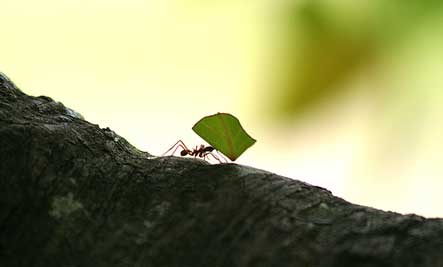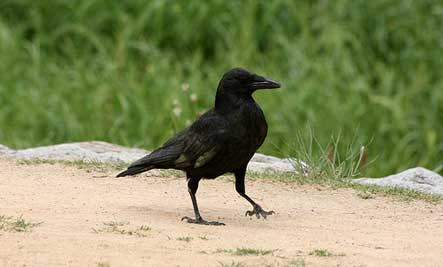

















There are many things you can do to "detox" your home, some more practical than others. Here are my 20 suggestions:

No shoes in the house.
Most household dirt, pesticides, and lead come in on your shoes. Go barefoot or wear slippers. Place floor mats vertically by your entryways to wipe your shoes. This way more dirt and residue from your shoes stays outside on the mat.
Keep the air clean.
Keep your windows and doors open as much as possible to ventilate. Use green plants as natural air detoxifiers. Remove odors with baking soda. Use fresh flowers or bowls of herbs like rosemary and sage to add a pleasant fragrance to rooms. Have your air ducts and vents cleaned with nontoxic cleaners. Get a portable air cleaner/purifier, especially for the bedrooms.
Switch from the standard household cleaning products to cleaner and greener ones.
These don't damage your health or the environment's as much and work as well as the mass marketed ones. You can also use basic ingredients you have around the house, for instance, vinegar in place of bleach, baking soda to scrub your tiles, and hydrogen peroxide to remove stains. According to Annie Bond, the author of "Better Basics for the Home," she can clean anything with water and these five basic ingredients:Baking soda, washing soda, distilled white vinegar, vegetable-based liquid Soap (e.g., Dr. Bronner's Peppermint Soap), and tea tree oil.
Replace your skin care and personal products with less toxic and chemical-free options.
Deodorant, toothpaste, cosmetics, hair products, nail polish, and perfumes are often loaded with toxins. Learn how to identify them and avoid them.
Use plastics wisely
Some plastics contain Bisphenol A (BPA), which is linked to cancer, and phtalates, which are linked to endocrine and developmental problems. Avoid plastic food packaging (when you can). Don't wrap food in plastic. Don't microwave food in plastic containers. Choose baby bottles made from glass or BPA-free plastic. Avoid vinyl teethers for your baby. Stay away from children's toys marked with a "3" or "PVC." Avoid plastic shower curtains.

Avoid nonstick pans, pots, bakeware and utensils.
Teflon contains perfluorinated chemicals (PFCs) which have been linked to cancer and developmental problems.
Keep house dust to a minimum.
More dust means more toxins. Mop all surfaces at least once a week. Use a vacuum cleaner (with a HEPA filter, preferably) for your carpets. HEPA-filter vacuums capture the widest range of particles and get rid of allergens.
Avoid excess moisture.
It encourages the growth of mold and mildew. Check areas for moisture accumulation or leaks (particularly basements). Regularly clean surfaces where mold usually grows - around showers and tubs and beneath sinks.
Get a shower filter.
Many of the contaminants in tap water become gases at room temperature. A shower filter can help keep these toxins from becoming airborne.
Get a water filter.
More than 700 chemicals have been identified in drinking water. Filtering your tap water is better than drinking bottled water.
Avoid stain-guarded clothing, furniture and carpets.
These may contain PFCs. Wrinkle free and permanent press fabrics used for clothing and bedding commonly contain formaldehyde -- use untreated fabrics where possible.
Be conscious of toxins in carpeting.
Avoid products made from synthetic materials. Use natural fiber wool & cotton rugs. If possible, replace wall-to-wall carpeting with hardwood floors, all natural linoleum or ceramic tiles. Use nontoxic glues, adhesives, stains, or sealers for installation.
Seal (with a nontoxic sealer) or replace particleboard walls, floors or cabinets.
These often contain formaldehyde, which can emit irritating and unhealthy fumes for decades. Avoid plywood, fiberglass, fiberboard and paneling.
Avoid harmful pet-care products.
Avoid toxic pest control (including traditional termite exterminators).
Replace toxic lawn and garden pesticides and herbicides.
Use with less harmful natural ones.

Tell the dry cleaner not to use the plastic wrap.
Or remove it as soon as possible because the plastic traps the dry cleaning chemicals on clothes and in your closet. Let your dry cleaning air out (preferably outside) before storing it. Use "wet cleaning" if you are lucky enough to have it in your area.
Use low VOC, low-odor latex (water-based) paint.
Open all windows to ventilate properly when painting indoors.
Have your house checked for carbon monoxide leaks.
These are most commonly found in leaking gas stoves, gas fireplaces, furnaces and chimneys and gas water heaters).
Check Radon levels.
Inspect poorly ventilated basements that have cracked walls and or floors. Radon is an odorless gas that forms as uranium in rocks and soil breaks down. Radon is linked to lung cancer.
We can reduce our risk of chronic illness.
Limit exposure to these toxins but don't let this become an obsession which can cause so much stress that it creates more of a negative impact on your health than the toxins themselves.
And finally, no amount of environmental toxins are as important as emotional toxicity. You can do all the above, but if your house is full of anger, resentment, jealousy, unhappiness and a lack of love, compassion, and forgiveness, the house will remain toxic.




1. Homing Pigeons
While most humans need several types of maps and a compass to find their way home after a long journey, the homing pigeon can return from extremely long distances (more than 1,100 miles) without any guidance.
Well, as a matter of fact, they do have some help: According to research by the University of Frankfurt, these pigeons have iron-containing structures in their beaks, which help them sense the Earth's magnetic field independent of their motion and posture, and thus identify their geographical position.
Research results this year indicate this magnetic charm is present in other birds as well.

Ants
Despite their size, the world's many varieties of ants have amazing skills. One of the most impressive is themycocepurus smithii from the Amazon, a super feminist species that has developed the ability to reproduce via cloning -- dispensing with both sex and males -- to evolve into an all-female breed.
According to research from the University of Arizona, it's not clear when the change happened, but by reproducing without sex, the ants avoid the energetic cost of producing males and double the number of reproductive females produced each generation.
For us humans, ants have also learned super efficient ways to organize their traffic. And 2006 research by the Berkeley University of California has established that the trap-jaw ant (odontomachus bauri) can close its mandibles at an incredible speed: The strike lasts 0.13 milliseconds, 2,300 times faster than the blink of an eye. This allows them to jump enormous heights for their size.

3. Elephants
They're huge, and sometimes they seem tired and slow. But it's no surprise that this mammal's peculiar nose is really something: Research from the University of St. Andrews suggests that elephants can keep track of up to 30 absent members of their family by sniffing out their scent and building a mental map of where they are. How useful would this little feature be for moms with several kids?
Even better, according to another study by the same University, elephants can tell whether a human is friendly or a threat by their scent and color of clothing. So good luck trying to fool them.

4. Termites
In Zimbabwe, the termite species Macrotermes michaelseni has developed a precise technique to farm a specific fungus they feed on. As this fungus can only grow at 87 degrees Fahrenheit, and temperatures outside range from 104 degrees Fahrenheit during day and 35 degrees Fahrenheit at night, the termites have come up with a system to keep the temperature steady in their mounds by constantly opening and closing heating and cooling vents.
This is such a useful idea that Loughborough University has conducted research in order to use the same technique in human buildings. Case in point - the Eastgate Centre in Harare, Zimbabwe has been modeled after the termites' system.

. Chimps
Much has been said about the intelligence of chimps, with some people claiming they're geniuses and others saying they're only as smart as a three year old kid. Of course, the actual facts fall in between.
But there is at least one area in which chimpanzees are smarter than humans -- photographic memory.A study by the Primate Research Institute at Kyoto University proves young chimpanzees have an extraordinary working memory capability for numerical recollection, better even than that of human adults tested with the same apparatus following the same procedure.
Presented with the same sequence of numbers, small chimps could recall them, outperforming humans. Not too shabby.

6. Crows
Contrary to the massive amount of animals and species facing extinction, crows are thriving, reproducing all over the world, with the small exceptions of the Arctic and the Southern tip of South America.
But, although they're proven to be smart in many ways (as Joshua Klein explains in this TED talk), officially scientists say they're not smarter than humans.
However, their amazing capacity for fast adaptation and ability to live in cities show they could be a lot more than they are today. And who knows, one day they might top us.

7. Dolphins
Ok, again, not officially smarter than humans yet, but dolphins have recently been declared the world's second most intelligent creatures (after humans). A zoologist from Emory University in Atlanta, Georgia, according to The Times,has even gone far to say that their "neuroanatomy suggests psychological continuity between humans and dolphins," and called for reconsideration of human-dolphin interactions. Another scientist from the Loyola Marymount University in Los Angeles has even called them 'non-human persons.'
So yes, dolphins are smarter than chimps and with communication skills similar to humans'. Their brains are only second in mass to the human brain, making them cultural animals with distinct personalities with the ability to think about the future, among other faculties.









